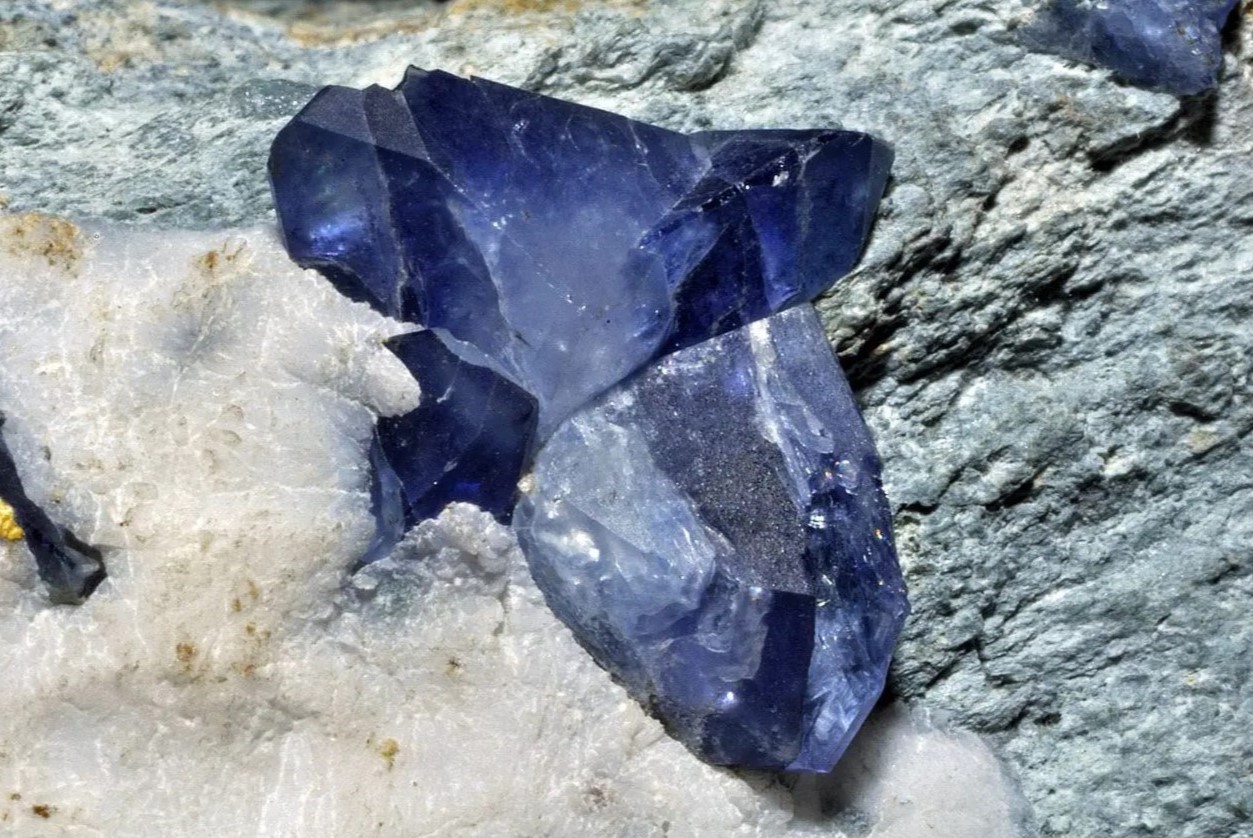
Benitoite is a rare and stunning blue gemstone that captures the imagination of gem enthusiasts and collectors alike. Found primarily in San Benito County, California, this gem has a unique sparkle and brilliance that sets it apart from other stones. Did you know that benitoite is also the official state gem of California? Its rarity and beauty make it highly sought after, but there's much more to this gem than meets the eye. From its fascinating discovery to its unique properties, benitoite holds many secrets waiting to be uncovered. Ready to dive into the world of this captivating gemstone? Let's explore 50 intriguing facts about benitoite!
Key Takeaways:
- Benitoite is a rare and beautiful blue gemstone found in California, known for its striking color and unique optical properties. It is highly valued by collectors and gem enthusiasts for its scarcity and beauty.
- The Benitoite Gem Mine in California is the main commercial source of this rare gem. Its delicate nature requires specialized mining techniques, and its fluorescence makes it popular for jewelry and scientific research.
What is Benitoite?
Benitoite is a rare blue barium titanium silicate mineral. It was first discovered in California, and its striking blue color has captivated gem enthusiasts and collectors alike.
- Benitoite was discovered in 1907 by James M. Couch in San Benito County, California.
- The mineral is named after its discovery location, San Benito County.
- Benitoite is the official state gem of California.
- It is often found in association with minerals like natrolite, neptunite, and joaquinite.
- The mineral's chemical formula is BaTiSi3O9.
- Benitoite has a hardness of 6 to 6.5 on the Mohs scale.
- It exhibits strong blue fluorescence under short-wave ultraviolet light.
- The crystal system of benitoite is hexagonal.
- Benitoite crystals are typically small, often less than 2 cm in size.
- The mineral is highly prized for its rarity and unique color.
Unique Properties of Benitoite
Benitoite's unique properties make it a fascinating subject for both gemologists and mineral collectors. Its optical and physical characteristics set it apart from other gemstones.
- Benitoite has a refractive index of 1.757 to 1.804.
- It has a specific gravity of 3.65 to 3.68.
- The mineral displays pleochroism, showing different colors when viewed from different angles.
- Benitoite's blue color is due to trace amounts of iron and titanium.
- It can also appear colorless, white, or pink.
- The mineral has a vitreous luster, giving it a glass-like appearance.
- Benitoite is transparent to translucent.
- It has a conchoidal to uneven fracture.
- The mineral's cleavage is poor, making it challenging to cut and polish.
- Benitoite's fluorescence is one of its most distinctive features.
Mining and Sources
Benitoite is primarily found in a few locations worldwide, with the most famous deposits in California. Mining this rare gem requires specialized techniques due to its fragile nature.
- The original discovery site in San Benito County is the only commercial source of gem-quality benitoite.
- Small quantities have been found in Japan and Arkansas.
- The Benitoite Gem Mine in California is the most well-known source.
- Mining operations at the Benitoite Gem Mine ceased in 2006.
- The mine is now a popular destination for gem hunters and tourists.
- Benitoite is typically found in hydrothermally altered serpentinite.
- The mineral is often extracted from alluvial deposits.
- Mining benitoite requires careful handling to avoid damaging the delicate crystals.
- The rarity of benitoite makes it a valuable collector's item.
- Synthetic benitoite has been produced but lacks the natural gem's unique properties.
Uses and Applications
While benitoite is primarily valued as a gemstone, it also has other applications due to its unique properties. Its rarity and beauty make it a sought-after material for various purposes.
- Benitoite is used in jewelry, often set in rings, pendants, and earrings.
- The mineral's fluorescence makes it popular for use in UV light displays.
- Benitoite is a favorite among mineral collectors and gem enthusiasts.
- It is sometimes used in scientific research due to its unique optical properties.
- The mineral's rarity and beauty make it a symbol of prestige and exclusivity.
- Benitoite's blue color is highly sought after in the gemstone market.
- The mineral is often used in educational displays and museum exhibits.
- Benitoite's unique properties make it a subject of study in gemology courses.
- The mineral is sometimes used in metaphysical practices for its purported healing properties.
- Benitoite is considered a collector's gem due to its scarcity and unique characteristics.
Interesting Facts about Benitoite
Benitoite's history and characteristics are full of intriguing details that make it a fascinating subject for gem enthusiasts and collectors.
- Benitoite was initially mistaken for sapphire due to its blue color.
- The mineral was later identified as a new species by mineralogist George Louderback.
- Benitoite's discovery led to a rush of prospectors to San Benito County in the early 1900s.
- The largest benitoite crystal ever found weighed 15.42 carats.
- Benitoite is often found in association with rare minerals like joaquinite and neptunite.
- The mineral's fluorescence was first discovered by accident during a mineralogical study.
- Benitoite's unique properties have made it a subject of numerous scientific studies.
- The mineral's rarity has led to the creation of synthetic versions for research purposes.
- Benitoite is sometimes referred to as the "blue diamond" due to its color and rarity.
- The Benitoite Gem Mine is now a protected site, ensuring the preservation of this rare mineral for future generations.
Benitoite's Unique Charm
Benitoite, California's state gem, stands out with its brilliant blue hue and rare occurrence. Found primarily in San Benito County, this gemstone's unique crystal structure and fluorescent properties make it a favorite among collectors and geologists. Its discovery in 1907 by James M. Couch added a fascinating chapter to mineralogy. Despite its rarity, benitoite's beauty and scientific significance continue to captivate enthusiasts worldwide. Whether you're a gem collector or just curious about Earth's treasures, benitoite offers a glimpse into the wonders of nature. Its distinctive features and limited availability ensure it remains a coveted gem. Next time you see a sparkling blue stone, remember the unique charm of benitoite and its special place in the world of minerals.
Frequently Asked Questions
Was this page helpful?
Our commitment to delivering trustworthy and engaging content is at the heart of what we do. Each fact on our site is contributed by real users like you, bringing a wealth of diverse insights and information. To ensure the highest standards of accuracy and reliability, our dedicated editors meticulously review each submission. This process guarantees that the facts we share are not only fascinating but also credible. Trust in our commitment to quality and authenticity as you explore and learn with us.


